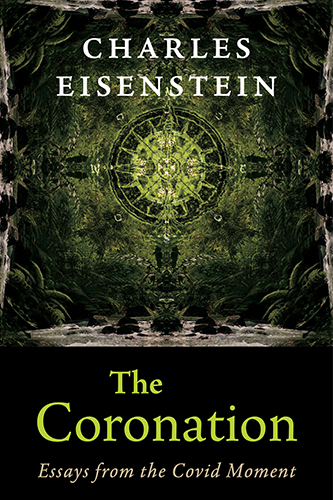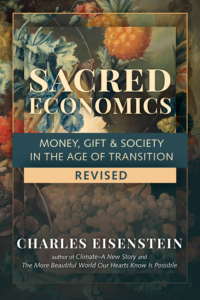Climate — A New Story
Chapters
Chapter 3: The Climate Spectrum and Beyond
A Visit to the World of Skepticism
The us-versus-them drama that our culture seems automatically to reenact appears not only as the “fight against climate change” but also, in the search for an identifiable enemy, as a battle against those who doubt or deny that climate change is real. The thinking goes as follows: if only the unholy alliance among fossil fuel companies, their financiers and investors, their political allies, and a small minority of venal academics could be overcome, we would be able to take meaningful, swift action to halt climate change. The identity of the enemy is clear. We can settle in to the familiar operating framework of the fight.
A nearly universal tactic in warfare is the dehumanization of the enemy. Accordingly, the Standard Narrative of climate change activism says that those who disbelieve in anthropogenic climate change must not be in full possession of their mental or moral faculties. They are greedy, they are corrupt, they are delusional, they are in denial; they are hypocrites, liars, and psychopaths. Otherwise, how could they ignore the overwhelming evidence, the “settled science,” the consensus of “97 percent of climate scientists”? It seems inconceivable and outrageous.
Trusting that I myself am not a hypocrite, liar, or psychopath, and am in possession of at least some fraction of my mental and moral faculties, I decided to explore the views of climate skeptics more deeply.
The climate skeptic camp turns the above accusations around and speaks of the incompetence and corruption of mainstream climate scientists. (Its more sophisticated adherents emphasize groupthink, publishing and funding bias, and political pressure as the main mechanisms by which orthodoxy is enforced.) In response to the label “climate denialism” they name the mainstream “climate alarmism.”
It may seem from the above that I am leaning toward the side of the skeptics in drawing what may look to the believer like a false equivalency. After all, in World War II the Nazis and the Allies demonized each other as well, but that doesn’t make the two sides equivalent. There were good guys and bad guys in that war (right?); all the more so in this one, where the survival of humanity is at stake.[2] To hint at the possible legitimacy of the enemy’s position or to criticize the rationale for war is already an act of betrayal—“rendering aid and comfort to the enemy” it was called during the Bush administration’s War on Terror. Likewise, it is an act of betrayal not to take sides. Such is the mentality of war.
In wartime, pacifists draw more hostility and contempt than the enemy does. Why? Because the pacifist questions the validity of the roles people identify with and the story they live in. They pose an existential threat—not to survival, but to identity.
In my exploration of the skeptic position, I adopted a kind of deliberate naïveté, rejecting both sides’ characterization of the other and temporarily assuming that most parties to the debate are, albeit imperfectly, competent, intelligent, and sincere. I chose various of the main lines of the standard climate narrative and then read extensively the best skeptical blogs and websites I could find, to see what they actually say about what seems to be overwhelming evidence for global warming. I also read the best and most patient rebuttals I could find of the skeptics’ arguments. Let me share a representative sample of my adventure, with my responses suitably exaggerated for dramatic effect.
I started with what looks like incontrovertible proof of AGW (anthropogenic global warming): Michael Mann’s “hockey stick” graph showing a rapid acceleration in global temperature in the twentieth century. In the graph, centuries of relatively stable temperatures precede a rapid warming closely congruent to the increase in atmospheric CO2. You can’t argue with the numbers. Certainly, correlation does not prove causation, but the absence of any other explanation for such a drastic, unprecedented rise makes a causal link likely, particularly in light of the greenhouse effect of CO2. How could an intelligent person sincerely doubt such strong evidence?
I decided to find out. The climate skeptics claim that there are serious flaws in the statistical methods used to construct the hockey stick graph.[3] They criticize both current and historical data as unreliable, incomplete, and heavily “adjusted” always with a bias toward demonstrating recent warming—old numbers adjusted lower, recent numbers adjusted higher. The tree ring proxy data, they say, doesn’t take into account that slower tree growth might be due to less CO2 or less rainfall, not colder temperatures.[4] Current data they also claim to be unreliable due to urban heat island effects—compared to the past, an inordinate number of weather stations are located near air conditioning vents, parking lots, airports, water treatment plants, and other heat sources.[5] Moreover, raw data is adjusted upward in a process called homogenization.[6] If one weather station is giving results that are out of line with neighboring stations, its data is homogenized under the assumption that it is subject to a malfunction or microclimatic influences—but usually, the skeptics say, the ones giving lower readings are adjusted upward, often in comparison to stations that are subject to the warmer temperatures resulting from the presence of buildings or asphalt. These problems have led some researchers to look at alternative temperature datasets gathered by satellites, which aren’t subject to the vagaries of widely distributed surface temperature readings. After all, theoretical models of greenhouse effects predict warming of the entire troposphere. These alternative datasets, say the skeptics, agree closely with each other and show a much slower temperature rise than the surface temperature data upon which the recent part of the hockey stick is built. In any event, present temperatures are still lower than during the Medieval Warm Period, which is the subject of repeated attempts to revise out of existence. Furthermore, say the skeptics, historical carbon dioxide levels follow and do not precede temperature increases, and often are not correlated at all. Ice core reconstructions of CO2 use data from which data points have been removed when they contradict the standard narrative, on the grounds that they must have been contaminated.
My goodness—how could I have been such a fool as to believe the party line peddled by Big Science? I’d been duped along with everyone else into believing the orthodoxy. How could I have been taken in?
Just to make sure, I’ll look at what mainstream climatologists say in response. Hold on here—things are not as the skeptics claim. The critics of the hockey stick are using one or two insignificant errors to throw out the entire paper; besides, the errors were corrected in the 2008 version of the paper. Since the original paper was published, other peer-reviewed research using numerous other proxies has confirmed again and again that the last two decades are the hottest in two thousand years.[7] There are now many, many “hockey stick” reconstructions of Paleoclimate data, all more or less consistent with Michael Mann’s.
As for the satellite data, the skeptics don’t realize that the orbital decay of the satellites introduces a spurious cooling effect that would have to be corrected for. You can’t trust the raw temperature readings. Second, temperature readings are also skewed by “diurnal drift.” Third, the satellites aren’t really measuring temperature; they are measuring microwaves emitted by atmospheric oxygen, which is only indirectly a function of temperature. Fourth, the charts I’d been looking at rely on weighted averages of various levels of the troposphere that are weighted in a way that might exaggerate cooling; moreover, data from different types of sensors must be combined and fitted to a single scale. In any case, scientists took the discrepancies seriously, but when they investigated the reasons and adjusted the data, the result was that satellite data matches surface temperature data and theoretical models quite closely. Moreover, there are actually five satellite datasets, and the skeptics always display the one that shows the least warming—even though that one correlates the least closely with weather balloon data, another source of troposphere temperature measurements.[8]
Historical CO2 levels, says the mainstream, only appear to follow temperature rises because rising temperatures kick off a positive feedback cycle, amplifying what would otherwise be minor warming.
As for the heat island effect and the data adjustments, says the mainstream, these have been handled very scrupulously in order to remove distortions in the raw data.[9] Besides, rural and urban weather stations are consistent in the degree of warming they show.[10] The same goes for the carbon dioxide levels in ice cores. Scientists had very good scientific reasons for eliminating outlier data points that could not be correct, since there is no possible mechanism by which CO2 could have been at those levels. To ignore the lengthy conversations within the community of scientists and issue an armchair opinion that they have connived to manipulate the results according to some preconceived “agenda” is an insult to the scientists and reveals a profound lack of understanding about how science is really done.
Wow, I’m sure glad I read these rebuttals by real scientists who aren’t on the payroll of the fossil fuel industry before I let any climate denialism infiltrate this book. I’d nearly been taken in by the deniers. Who do I think I am, anyway, to imagine that I know better than the climate scientists who have spent decades studying the topic? How arrogant to think that in a couple weeks of doing “research” on the internet I could find some obvious way they are wrong, and that they lacked the brains or integrity to see. I feel ashamed to have doubted them.
In the interests of due diligence, I’ll see if the skeptics respond. They do. The 2008 version of Mann’s paper, they say, contains the same basic flaws as the original, and other “hockey stick” studies use the same problematic temperature proxies. They claim that the reason that rural weather stations show the same upward trend as urban stations is that while defined as rural, many are also subject to significant urbanization. They say that in fact, the orbital decay factor was corrected for twenty years ago and in any case affected only the lower troposphere readings, which are not at issue here. Diurnal drift has been corrected for as well. The microwave emissions are a better measure of temperature than the electronic resistance method used for surface recordings. The climate establishment is constantly “adjusting the data” every time it doesn’t fit their narrative or models, each “adjustment,” of course, being in the upward direction. The datasets that conform to the weather balloon readings and demonstrate greater warming do so because they include data from a satellite that was not corrected for calibration drift, and then adjust the data for diurnal drift according to a climate model rather than empirical data.[11]
It looks like I was taken in again, bamboozled by the authoritative-seeming dismissals of the minority position without really understanding the science behind it.
What becomes apparent in this back-and-forth is that in the end I am probably unable to make my choice of belief on purely evidentiary grounds. When I pursued the question of temperature readings a bit further, I got mired in a morass of technical minutiae about atmospheric physics, statistical methods, and so forth that I lack the scientific background to easily understand. Mind you, I am scientifically literate and have a degree in mathematics from Yale University. If I can’t judge the issue on its merits, how can the average citizen? Moreover, as the disagreements among those who do have the scientific background demonstrate, educating myself further still might not resolve the issue. I am left with a nonevidentiary choice of whom to trust.
Unless you are a climatologist, meteorologist, or atmospheric physicist, you are in the same boat I am. Belief in anthropogenic global warming hinges mostly on whether one accepts the authority and integrity of the scientific establishment, including the soundness of academic publishing, the impartiality of peer review and funding, and resistance of individual scientists and institutions to confirmation bias. For many people, especially liberals and progressives, science is the only trustworthy institution remaining in our society. To doubt anthropogenic climate change is to question the very source of legitimate truth in our culture; as well, it is to question the other institutions that draw their legitimacy from science.[12] That is why, especially in the United States, those who disbelieve in climate change are generally members of the religious right who also disbelieve in other, even more fundamental, scientific theories. If you already believe that evolutionary theory is a vast unholy conspiracy to deny the biblical creation story, it isn’t much of a stretch to disbelieve in climate change as well. There is some truth in the derisive association of climate doubters with flat earth believers.[13] The truth is not in the derision though, because what is happening is not that they are silly or stupid. It is that they are rebelling against the dominant culture’s primary epistemic authority.
Another factor that might predispose someone to disbelieve climate change is that it might conflict with deeply held economic, social, or political views. Unsurprisingly, most climate change doubters hold conservative political opinions. They typically oppose government regulation of business and see climate change as a dangerous justification for increased regulation. They usually favor unbridled exploitation of “natural resources,” deriding the idea that nature poses any limits to human growth that technology cannot overcome. They are usually pro-nuclear power, pro-fracking, pro-offshore drilling, pro-coal mining, and in favor of bringing industrial development to the entire planet. Quite often (though not always), their position that we aren’t harming the climate is of a piece with their position that we aren’t harming the environment generally; that we shouldn’t worry too much about GMOs, chemical waste, nuclear waste, plastic in the oceans, pesticides, pharmaceutical waste, habitat destruction, and so forth. Furthermore, climate-change-doubting blogs and especially their comments sections are often peppered with Islamophobic sentiments (the government is using the climate change hoax to distract us from the real threat: Islam!) and other alt-right canards.
Here, in short, are two nonevidentiary reasons to believe in anthropogenic climate change: faith in the institution of science, and the bad company of those who doubt it’s happening.
So what was the final result of my descent into the world of climate skepticism? If you are still waiting for the answer to “Which side am I on?” I’m afraid you’ll have to wait a little longer (until the end of this chapter). One thing I found in my excursion, however, is that each side is mistaken in the characterization of the other. The skeptic side, while certainly surrounded by a penumbra of ignorance, pseudoscience, and worse, is home to many reasonable, scientifically literate individuals who endure intense hostility for articulating heterodox viewpoints. The “War on Evil” approach to combating climate skeptics (starting with the poisonous slur “climate denier”) is based on false premises. While I think that they sometimes overlook or minimize data that doesn’t support their position, prominent dissidents like Judith Curry, John Christy, Roy Spencer, Jim Steele, and Stephen McIntyre are neither corrupt, stupid, nor insincere, and at least some of them are also passionate environmentalists who care deeply about the ongoing degradation of nature. Moreover, at least from the perspective of a layman who has looked at both sides, some of their criticisms have merit. Whether or not the mainstream view is right, science and the public would benefit from a more respectful and less dogmatic engagement with the skeptics.
The skeptics’ derisive view of establishment scientists is also wrong. It is obvious to me when I speak with climate scientists and read scientific papers that these people are also, generally speaking, scrupulous, conscientious scientists who care deeply about the planet. When skeptical bloggers accuse them of being part of an evil conspiracy, of criminal negligence, financial corruption, or hidden “political agendas”; when they bandy about degrading caricatures of “greenies” and “enviros,” they undermine the credibility of any legitimate criticisms they may have.
Furthermore, many skeptics who are not trained scientists are frequently guilty of intellectual sloppiness of the grossest kind, which suggests that they are the ones with a political agenda. They uncritically embrace flimsy evidence and arguments that serve their desired conclusions. To give a representative example, I came across an authoritative-looking graph of ice core proxy temperatures going back thousands of years, apparently from ten thousand years before present to today, showing that temperatures during the Minoan Warming, Roman Warming, and Medieval Warming were much higher than present temperatures.[14] It was presented in a right-wing blog that essentially said, “The climate establishment must be idiotic or corrupt, when their own data shows that present temperatures are far below historical periods.” The comments section was a chorus of agreement. It was an impressive graph, so I went to look at the information source, which was a peer-reviewed paper by R. B. Alley.[15] There I saw that the graph created by the blogger was highly misleading, because the data series from which it drew only went up to 1905 (which would make sense since ice cores are not useful proxies for very recent temperatures). Yet the graph was labeled to look as if it went up to the present day. All it showed, then, is that historical temperatures were much higher than they were in 1905—before modern emissions-caused warming is supposed to have begun.[16]
Of course, the behavior of a cadre of scientifically untrained and politically motivated followers doesn’t entail that the skeptics’ arguments are without merit. It should caution us to proceed carefully though, and to be aware of confirmation bias—our own as well as that of others. Confirmation bias refers to the tendency to prefer evidence that conforms to an existing belief and to interpret evidence in a way that supports that belief. So, the right-wing bloggers embraced that graph without subjecting it to any scrutiny whatever, even though a cursory check of the underlying data revealed it as bogus.
The more ego attachment one has to one’s opinions, the greater the likelihood of confirmation bias. Signs of this ego attachment include self-righteousness, smugness, and contempt for those who disagree. I am sorry to say that I see a lot of all three in the writings of both sides, leading me to have little trust for either. Go read the blogs and comments sections of each side and ask yourself whether these people would be open to being wrong.
Now you, dear reader, may think yourself relatively free of confirmation bias, but notice how you respond when you read something critical of your position on climate change. Don’t you subject it to much greater scrutiny than you would something that supports your position? Who is that guy? Was it in a peer-reviewed journal? Is he funded by oil companies? Let me find something that debunks it .… From that mindset, it takes only the most superficial rebuttal, character assassination, unsubstantiated accusation, etc., to cause the believer to dismiss the criticism. By the same token, you will probably give a free pass to articles that confirm your position. You won’t bother to look at the unadjusted raw data, to question the fidelity of proxy temperatures, and so on. Generalize this tendency, and we have a society of increasingly noncommunicating reality bubbles, warring with each other even as their hidden agreements go unexamined, and their shared interests neglected.
End Notes
[2] I’m quoting the standard narrative of World War II here. In reality, while there were clearly bad guys, it is not so clear that there were any good guys. The war against the Axis powers was inextricably tied in its historical origins and execution to American imperial ambitions; the defeat of even worse imperial powers was a happy side effect.
[3] See, for example, Muller (2004) and for a more polemic take, see Krüger (2013). For a simplified summary of the basic statistical criticism, see Moriarty (2010).
[4] Moriarty (2010).
[5] See Watts (2009).
[6] For a reasonable presentation of this contention, see Steele (2013).
[7] Moriarty (2010).
[8] Foster (2016).
[9] For a partial explanation of how this is done, see: Hausfather and Menn (2013).
[10] Mothincarnate (2015).
[11] Spencer (2016).
[12] By science here I am not intending to impugn the Scientific Method itself, only whether the institutions of science uphold it faithfully. Whether their failure to faithfully uphold it reflects deeper epistemological and ontological problems is another matter. The Scientific Method carries tacit metaphysical assumptions (such as an observer-independent objective reality) that are untestable from within its assumption-set. The apparent failure to uphold the objective pursuit of truth in its institutions may be an irremediable reflection of the limitations of its metaphysical foundation, rather than a conditional shortcoming that could in principle be eliminated through reforms to peer review, academic practices, more stringent replication of experiments, and so forth.
[13] I know several very intelligent people who believe the earth is flat. The recent popularity of Flat Earth Theory reflects a growing public alienation from the scientific establishment. Most commentators attribute this either to the arrogance and poor communication skills of scientists, to the inaccessibility of highly specialized scientific language, or to the stupidity and ignorance of the public. Another possibility, though, is the scientific establishment has earned this distrust through its alliance with the Establishment generally, whether economic or ideological. P.S. I think Earth is round. P.P.S. To the extent, that is, that the objective “is” of identity is ontologically valid.
[14] I do not want to reproduce the graph, because I’m afraid someone will use it without context. You can easily find it on the internet by searching for “GISP2 Ice Core Temperature Data Last 10,000 Years.”
[15] Alley (2000).
[16] This sloppiness obscures the fact that the Minoan, Roman, and Medieval Warm Periods were probably warmer than present temperatures.






